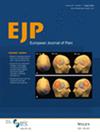Effectiveness of Equimolar Mixture of Oxygen and Nitrous Oxide Combined With Audiovisual in Young Children: A Randomised Controlled Trial
Abstract
Background
Children undergoing painful procedures often experience distress and anxiety, impacting their cooperation and perception of healthcare. This study evaluates the effectiveness of combining Equimolar Mixture of Oxygen and Nitrous Oxide (EMONO) with audiovisual distraction (experimental group) versus EMONO only (control group) to improve cooperation and reduce pain during peripheral venous catheter (PVC) placement.
Methods
The first 120 eligible children 2–5 years old and requiring PVC placement were enrolled. Sixty children were randomly assigned to the experimental group and 60 to the control group. Cooperation and pain were assessed by employing validated tools throughout the procedure. The presence of side effects was also investigated as a secondary outcome.
Results
Among the 120 recruited children, 46.7% were males and the mean age ± SD was 3.35 ± 1.11 years. In univariate analyses, no differences between the groups were detected for socio-demographic and clinical variables; in the experimental group, a significantly increased cooperation during the procedure and a reduced pain were observed (p < 0.01). In logistic regression models, children receiving the experimental treatment were more than 15-fold likely to collaborate (OR = 17.0, p < 0.01) and less likely to perceive more than mild pain (OR = 0.22, p < 0.01). Older children were more likely to collaborate (OR = 1.65, p < 0.02) and to be less prone to experience serious or worse levels of pain (OR = 0.51, p = 0.005). The experimental treatment was associated with reduced vomiting episodes in univariate models only.
Conclusion
The combination of audiovisuals with EMONO may be effective in increasing cooperation and reducing pain in children 2–5 years during PVC placement.
Significance Statement
Children often experience pain during illness-related procedures, such as peripheral venous catheter placement. EMONO is recognised for its effectiveness in reducing pain and enhancing cooperation. Additionally, audiovisual distraction techniques are employed to divert children's attention during medical procedures. Our study addresses a gap in knowledge regarding cooperation, pain and symptom management by utilising a non-pharmacological, safe and easily accessible technique—watching audiovisuals. This approach is particularly relevant for a population that is underrepresented in the literature.
Trial Registration
ClinicalTrials.gov identifier: NCT05435118

 求助内容:
求助内容: 应助结果提醒方式:
应助结果提醒方式:


